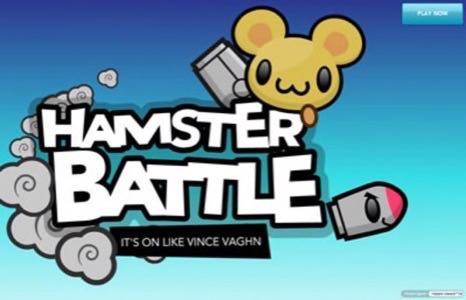The obvious lesson from Zynga’s purchase of OMGPOP yesterday is that the games industry is still very much a hits-driven business. And when you’re the giant in the business and a small startup like OMGPOP has a smash hit, it’s easier to buy the hit than try to replicate it. That’s why Zynga was happy to part with up to $210 million, reportedly, for the New York-based studio.

But there’s more than meets the eye here. OMGPOP is a fascinating story in the life of a startup, with many lessons to learn here for entrepreneurs, developers, financiers, and dreamers.
1. App Store Overnight Success Is Real (And Unpredictable)
Draw Something’s meteoric rise to the top of the App Store charts is the sort you’d dream of. From its launch on Feb. 1, it started shooting up the charts, reaching no. 1 in about a month.
As OMGPOP CEO Dan Porter tweeted yesterday, “It took AOL 9 years to hit 1 million users. It took Facebook 9 months. It took Draw Something ~9 days.”
How did they do it? It wasn’t an original idea – drawing games have been around forever. Heck, the web version of “Draw Something” launched as “Draw My Thing” more than a year ago.
It just hit. “No one had any idea that this would take off, and no one knows why it did,” an OMGPOP investor told All Things D’s Peter Kafka.
And, by the way: When overnight success hits, brace for impact. Porter tells a good story of OMGPOP’s scaling challenge: “We had to move completely off of Amazon and host everything ourselves. As soon as we did that, our growth exploded again. Going from the 25th to the 1st most popular app was as much about performance as anything.”
2. You Can Fail 30 Times And Still Succeed
“Draw Something” wasn’t OMGPOP’s first game. Its website actually lists more than 30 game titles, from the 2007-vintage Tetris clone “Blockles” to 2008’s “Hamster Battle” (that one was pretty fun) to the “Jigsawce” puzzle game.
Similarly, “Angry Birds” was Rovio’s 52nd game. Today, four of the top 25 most popular paid iPhone apps are “Angry Birds” varieties.

In a hits-driven business like gaming, stamina is as important an asset as creativity. (And luck!) Be patient.
3. “Sell High”
It’s only been a day, and “Draw Something” has already been knocked off the no. 1 App Store spot by the new “Angry Birds Space” game. Who knows, the “Draw Something” craze could fade as quickly as it started.
So, sure, it’s possible that OMGPOP could have kept growing like “Angry Birds” parent Rovio and become a billion-dollar company someday. More likely, arguably, it could have raised a new round at a high valuation, lost momentum, and gone back to the drawing board.
After all these years of hustling and struggling, it’s no surprise that Porter and OMGPOP’s investors would have been thrilled to see a $200+ million exit. That is a lot of money with the power to change many peoples’ lives. Especially when the lights could have easily gone out by now. (Fortune’s Dan Primack has an interesting story of the company’s funding challenges: “The deal that saved OMGPOP.”)
Anyway, if you’re going to sell the company based on a hit, sell on the way up. Great timing for Dan Porter.
4. Startups Can Thrive Without Their Iconic Founders
In the New York tech community, OMGPOP was synonymous for years with its scenester founder, Charles Forman. (It was once a small scandal that Charles received so many demo slots at the monthly New York Tech Meetup.)
But Forman hasn’t been day-to-day at OMGPOP for a while: He’s been working on Picturelife, a photo sharing startup. Forman may have given OMGPOP its start, but Porter is the man now.

In most cases, it’s probably better for recruiting, public perception, and morale if the company’s founder is still an important employee. Digg remains a tough sell without Kevin Rose. (Rose, coincidentally, was one of the first OMGPOP investors.)
But it’s certainly possible to thrive without them.
5. Your First Idea Doesn’t Matter That Much
This is something you hear a lot, and it’s true: It’s not uncommon that the first idea you have for a company isn’t the one you see through. In the case of OMGPOP, gaming was actually the third idea.
“The beginning of the company itself was, in some sense, an accident,” Forman told Gawker in 2007. “I went alongside Dan Albritton to help him pitch his mobile business idea to Y Combinator as a favor to Dan. Within minutes of presenting, Paul Graham at Y Combinator told us that Dan’s idea wouldn’t work and that they weren’t interested. They were, however, interested in us, as people. Paul asked if we had any other ideas.”
That led to I’minlikewithyou, a sort-of auction-based dating site. And that eventually led to a pivot into social gaming, hiring Porter as CEO, and changing the company’s name to OMGPOP. And that was 3 years ago. It’s been a mostly tough slog since then.
Similarly, OMGPOP was all but married to Adobe’s Flash technology when it started to lose favor as Apple’s iOS platform took off. But even OMGPOP was able to shift off that platform and make its biggest hit – which ultimately sold the company – using a different technology platform. It’s important to be flexible.
Charles Forman photo (cc) Brian Solisvia Flickr.

















